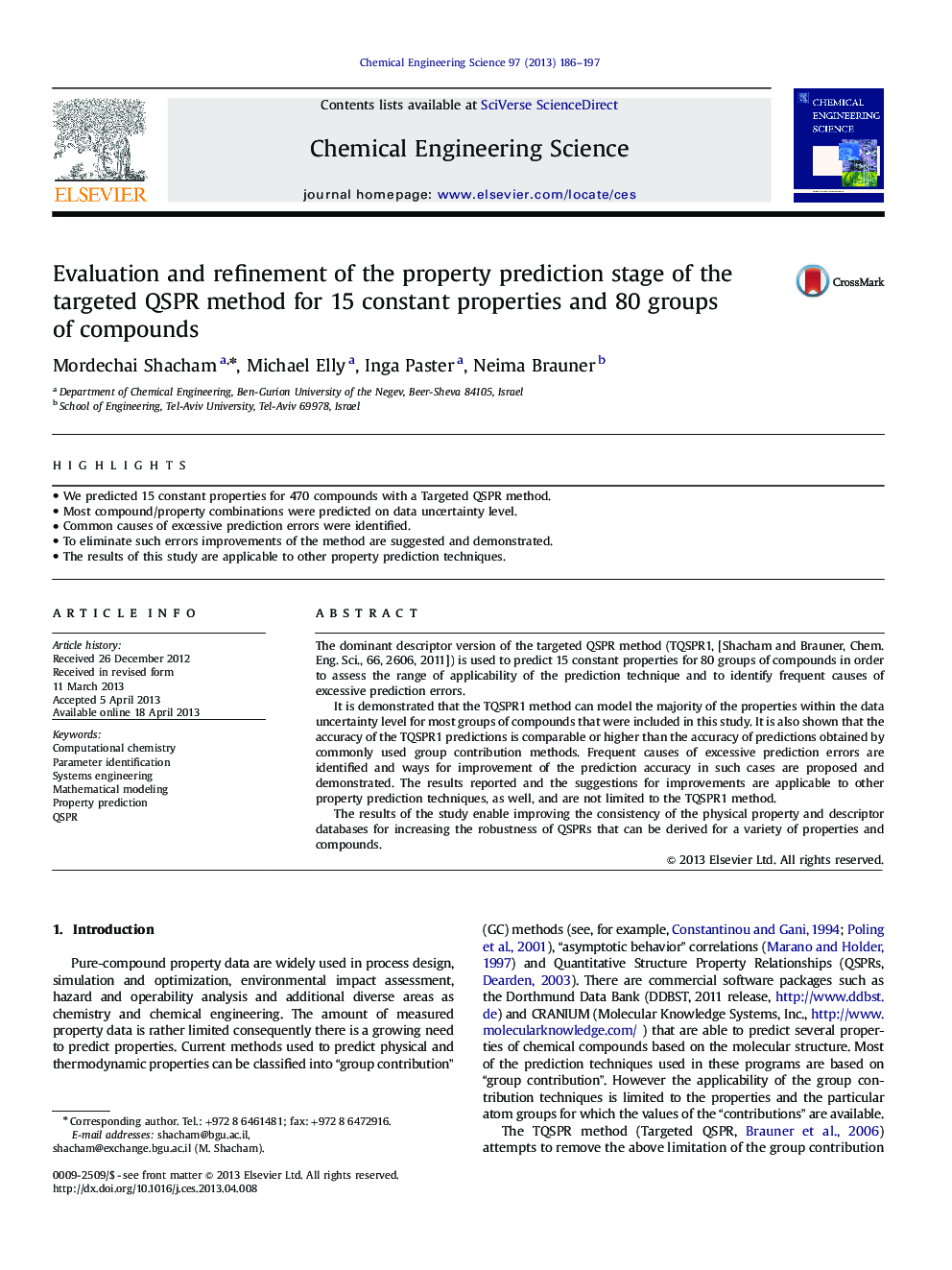| Article ID | Journal | Published Year | Pages | File Type |
|---|---|---|---|---|
| 155192 | Chemical Engineering Science | 2013 | 12 Pages |
•We predicted 15 constant properties for 470 compounds with a Targeted QSPR method.•Most compound/property combinations were predicted on data uncertainty level.•Common causes of excessive prediction errors were identified.•To eliminate such errors improvements of the method are suggested and demonstrated.•The results of this study are applicable to other property prediction techniques.
The dominant descriptor version of the targeted QSPR method (TQSPR1, [Shacham and Brauner, Chem. Eng. Sci., 66, 2606, 2011]) is used to predict 15 constant properties for 80 groups of compounds in order to assess the range of applicability of the prediction technique and to identify frequent causes of excessive prediction errors.It is demonstrated that the TQSPR1 method can model the majority of the properties within the data uncertainty level for most groups of compounds that were included in this study. It is also shown that the accuracy of the TQSPR1 predictions is comparable or higher than the accuracy of predictions obtained by commonly used group contribution methods. Frequent causes of excessive prediction errors are identified and ways for improvement of the prediction accuracy in such cases are proposed and demonstrated. The results reported and the suggestions for improvements are applicable to other property prediction techniques, as well, and are not limited to the TQSPR1 method.The results of the study enable improving the consistency of the physical property and descriptor databases for increasing the robustness of QSPRs that can be derived for a variety of properties and compounds.
